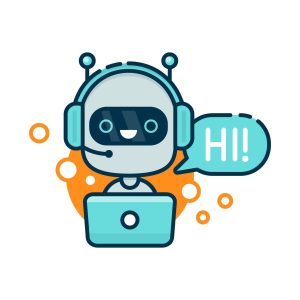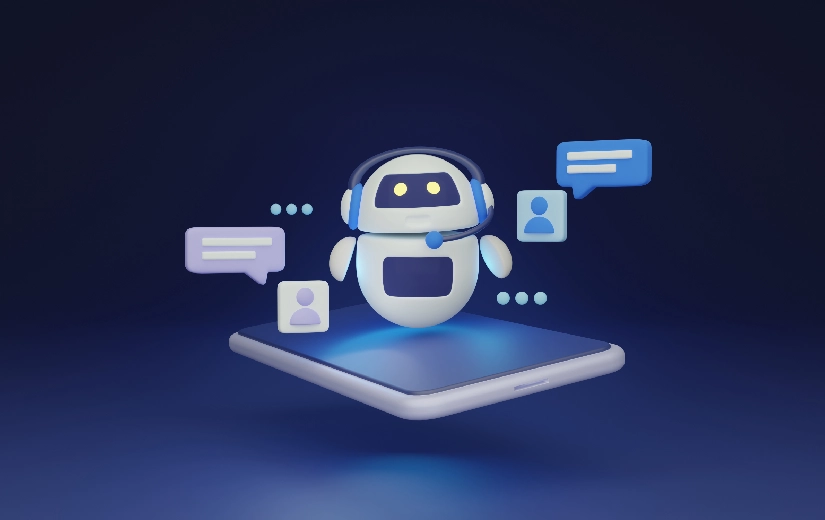Introduction
Currently he noted that in the contemporary world, chatbots are applied in nearly all the social relations in the digital context especially in the customers or suppliers’ relationships. Concerning the mentioned above AI interactions, such systems guarantee users a comprehensible process of interacting with AI systems. But it may be wondering, I’m how does it work? This article revolves around the details of chatbot AI which includes the various technologies utilized, fundamentals concerning the establishment and deployment of the chatbots in a variety of fields.
Understanding Chatbots
Chatbot is an Artificial intelligence based application which intends to mimic, intelligent conversation with a human. The results are that it can talk text or voice, answer questions, and also can do actions according to planned programs or learned information. Chatbots are used in various areas for example in the market as services, as interpersonal assistants and in games.
Two types:
Rule-Based Chatbots: Specifically, these chatbots rely on the specific scripts and on the decision-making trees which are created. Employ the usage of a flow pattern to enable the completion of a specific set of instructions for a particular task or for answering inquiries and therefore suitable for simple talk.
AI-Powered Chatbots: These chatbots employ enhancing AI approaches in both NLP and ML in order to enable modifications whenever the customers employ the application. They can take more and different questions and there is no constricting factor that hampers one in using it.
(NLP)
Text Parsing: This is the procedure of ensuing that only meaningful information is derived from the user input as is the case with NLP. NLP performed different processes on the text and such of them are as follows; tokenization (conversion of a text message into words or phrases), POS tagging (identification of the specific part of speech for every word of the text), and named entity recognition (identification of specific sentiments such as name, place, etc).
Intent Recognition: Again, the response of a chatbot greatly depends on the user’s intent which is very important to comprehend. NLP models for handling, interpreting, and analyzing the user inputs involve machine learning categorizing the inputs into certain types. consider, before responding.
Machine Learning (ML)
Training Data: As AI based chatbots are developed from large sample of chat and interaction data bases. In this way, the training of such a chatbot enriches the patterns, structures and contextual data within the regions of its database.
Model Training: This is type of machine learning algorithm where the neural networks are used to teach the language model of the chatbot. It involves the model when in a bid to generate the response of queries on a broader utility, it deploys that which was fed to it for training purposes.
Continuous Learning: All AI chatbots have two unique characteristics of transfer learning and reinforcement learning which make them learn from the result of the interaction with the users.
Dialogue Management
Context Management: The fourth condition that lies in common with real life cooperation is that a real conversation must keep the context throughout the conversation. Chatbots utilize the context in a way in order to provide relevant responses and handle flow in conversations. This means the logs of their actions, their chats and the state of their session has to be comprehended and either saved or processed.
Response Generation: Its response generation process begins after the functionality of recognizing the user’s intent and the entities to be passed have been achieved. This can be a set number of templates that are predefined, the data coming through with templates being created on the fly, or both. They use word generation techniques that NLPs are known for when crafting well-structured replies to the commands given.
Integration with External Systems
APIs and Web Services: Other external systems which are typically established by a chatbot are made available through APIs and web services. This enable them to look for information, to perform arithmetic calculations and to interface with other software. For instance, the travel chatbot includes applications, and program interfaces for extracting flight information in addition to booking.
Databases: Chatbots may also use the said database to input user information and to spar with it,recall prior conversation, and store. This makes it possible in making responses more relevant and in maintaining status of context from one session to another session.
How Chatbot AI Works: In this paper, the emphasis is made and directions on formulating and establishment of a step-by-step process articulated.
From the theoretical perspective, it seems necessary to analyze the process defined by the presence of chatbot AI at the moment.

Benefits of Chatbots
Types of Chatbots
Rule-Based Chatbots:
Keyword-Based: These automatons work at the time when the user or the application provides certain keywords of the discussion or term. In most of them, the produced answers are predetermined according to the keywords that the robots scan virtually based on a standard process akin to the fixed pattern of a decision tree.
Flow-Based: In flow based chatbots the flow of conversation is pre defined and a decision tree is followed for the decision for the right flow. Significantly, they are most fitting for situations where the tasks are simple and repetitive.
AI-Powered Chatbots:
Retrieval-Based: Reactive chatbots are those which depend on machine learning algorithms for the selection of the most suitable text message from the list of the available messages. They find the needed word using the context They search the specific word in the context.
Generative: Sophisticated LLMs employed in the generative approach enables the generation or formulation of a reply to the user’s input message. As a result they are capable of formulating completely unique and appropriate replies in relation to the context that the user makes to the program.
Applications of Chatbot AI
Customer Support:
24/7 Availability: Online support is available and includes which one of the following, the chatbots answer the customer’s questions or complaints.
Efficient Query Handling: The user bond is appropriate for being able to handle many queries concurrently where the customers are likely to be Omni waited.
E-Commerce:
Product Recommendations: In fact, with the help of chatbots, one can study the activity of users and even their choice during the perusal of the goods.
Order Management: They assist in order creation and placing, as well as order changing and even deleting, these make e-commerce smooth.
Healthcare:
Symptom Checking: As for instructions on what to do next or in the case of development of symptoms, users can be rather useful in pointing out how probable it is to get the symptoms or not.
Appointment Scheduling: They assist in scheduling regarding the choice of physicians and doctors as well as in managing records of patients.
Finance:
Account Management: Some of the banking services that can be provided through the use of these chatbots are; account details, banking operations and/or financial advisory services among others.
Fraud Detection: They can be helpful in relaying the activities of special operations that fall deviant from the standard therefore strengthening the security features.
Education:
Tutoring: They offer one-to-one online lectures and tutoring to the students in home works and other related leaning materials.
24/7 Availability
Hence, chatbots are functional 24/7 and are always ready to support the user or provide some necessary information. This help ensure that business can meet the demands of clients in the global market without necessarily having large human resource departments.
Cost Efficiency
Since chatbots tend to perform most of the standard processes virtually which prevent people’s interference, they greatly contribute towards minimizing operational expenses. They enable firms to achieve efficiency by means of which they can free up their time and work on manifold issues.
Enhanced User Experience
Its benefit includes answering queries and encouraging the use of the applications more often by the clients. Such cases do not overwhelm them as they are capable of attending to several clients at once and provide assistance promptly without time-lags.
Scalability
Expanded answer Chatbots are also capable of optimizing the company’s communication with clients and generating large amounts of inquiries and messages. This makes them suitable for growing businesses and companies that are bound to receive a rush of customers at a given period.
Data Collection and Analysis
Through interaction with users, chatbots are of great help in data collection: they offer insights for customer’s behavior and preferences. This data can be used for the enhancement of services as well as for the change of certain services to match the needs of the customer; it also aids businesses in coming up with strategies.
Conclusion.
Chatbots are one of the most effective components in the sphere of artificial intelligence, providing numerous advantages in the multiple fields. Customers support to health, education, finance, and many other branches of business, chatbots are quickly becoming the key to interaction with clients. Over time, the application of technology in the development of the chatbots is expected to improve hence offering better services. However, it is imperative that the difficulties and the ethical issues attached to them are tackled so that they remain important resources.








3 thoughts on “How Does Chatbot AI Work?”